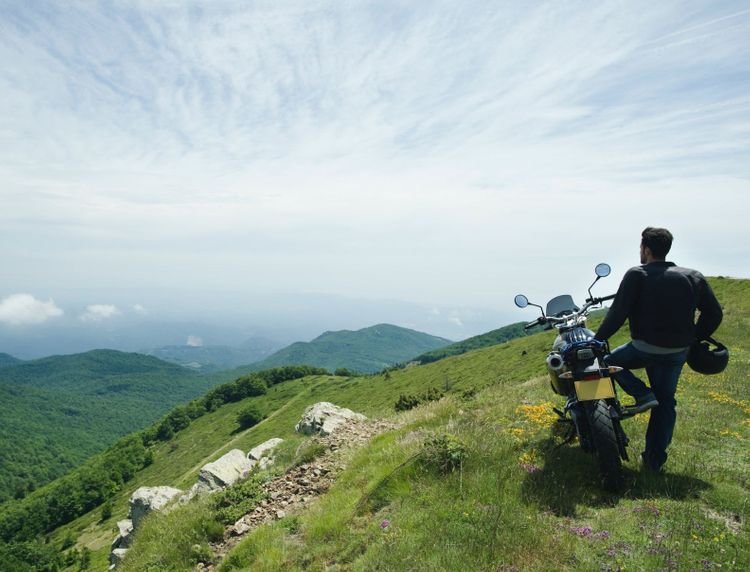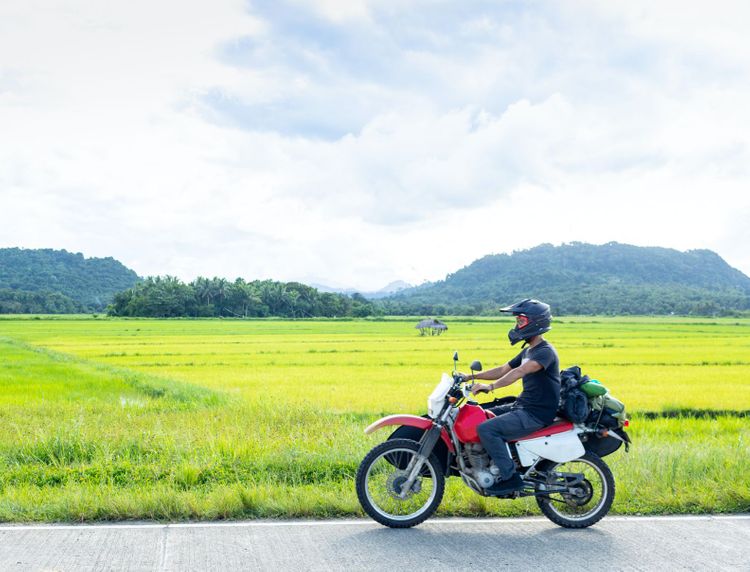How To Ride A Bike?
Riding your dream bike can be an exciting and happy experience. And if you are an ardent traveller loving to explore beautiful landscapes worldwide, then you certainly have a great way to go! However, while two-wheeler driving can be an exhilarating experience, it's important to remember that safety should always come first.
It can be daunting to learn a bike's controls as a beginner, but with practice and patience, you'll quickly become comfortable with the basics. However, always ensure to have a comprehensive insurance policy for your bike to ensure proper coverage.
Here is a detail to help you understand how to drive two-wheelers. With these tips, you'll enjoy the freedom of the open road while staying safe on your motorcycle.
Share this article
List of Content
- Start Your Bike
- Work On The Clutch
- Work On The Gear Shifts
- Braking To Stop
- Conclusion
Start Your Bike
Starting your bike is the most crucial aspect. After familiarising yourself with the controls, you can try starting the bike. Before you learn to ride a bike and start the engine, ensure the gearshift is in neutral and the side stand is up.
Turn the key in the ignition or press the start button to start the engine. Once the engine starts running, check the gauges to ensure everything is working properly. If the bike has a manual transmission, you must use the clutch and shift into first gear before pulling away from a stop. On the other hand, if the bike has an automatic transmission, you can twist the throttle and start moving.
It's important to remember to always have control of the bike when starting it and never to start the bike while it is on the side stand.
Work On The Clutch
The next step after ignition on how to learn bike driving is to practise the clutch movements.
- Start by pulling the clutch lever towards you.
- Using your left foot, shift the gear to the first level.
- Start releasing the clutch and squeeze the throttle.
The bike will start moving forward. If the engine falls and switches off, repeat the process until you get the movements right.
Work On The Gear Shifts
To upshift, you must first disengage the clutch by pulling in the lever, shift the gear shift to a higher gear, and gently release the clutch while giving the throttle. To downshift, you must first engage the clutch by pulling in the lever, shifting the gear shift to a lower gear, and gently releasing the clutch while giving the throttle. Using the right gear for your speed is important to maintain the engine at the right standards.
Braking To Stop
When braking to stop your motorcycle, it is important to use both the front and the rear to slow down or stop the bike safely. The brake lever is located on the right handlebar, near the throttle. You squeeze the brake lever with your right hand to slow down or stop. Using the brake smoothly and progressively, rather than squeezing it hard, is important. It will help to prevent the bike from skidding or locking up. The front brake is more powerful than the rear brake. Therefore, it should be used with caution. It is also important to remember that braking distances are longer on a bike than in a car, so you should always leave extra space when following other vehicles.
Insurance for bikes is essential for protecting yourself and your bike in case of an accident or theft. A third party bike insurance is mandatory according to the Motor Vehicles Act in India. Therefore, it is essential to compare and purchase insurance for your bike to stay financially secure.
However, a comprehensive policy offers more extensive coverage. Along with the third-party cover, it can cover the cost of repairs or replacement of your bike and medical expenses for yourself or others involved in an accident.
You can compare the different two-wheeler insurance policy options to find the one that best fits your needs and budget. Finally, read the policy carefully and make sure you understand the coverage, exclusions and limits when you purchase the 2-wheeler insurance online.
Conclusion
Riding a motorcycle can be a thrilling experience, but you should certainly remember that safety should always come first. As a beginner, it is essential to learn the basics of riding, including the bike's controls, how to shift gears, brake and how to use the clutch. It is also crucial to wear the proper safety gear, such as a helmet, gloves, boots and a jacket, and to choose the right bike for your needs.
With practice and patience, you can quickly become comfortable with the basics of riding and enjoy the riding experience while staying safe. Always obey traffic laws, be aware of your surroundings, and never push yourself beyond your limits.
Share this article
Latest from our blogs

5 Tips To Keep Your Two Wheeler Looking New
Make sure to wash it often. This keeps dirt and other unwant...
Read More
5 things you did not know about two wheeler insurance
In a time of heavy traffic and accidents, two wheeler insura...
Read More
What Does It Take to Be a Good Biker?
You must have wondered what it takes to become a better ride...
Read More